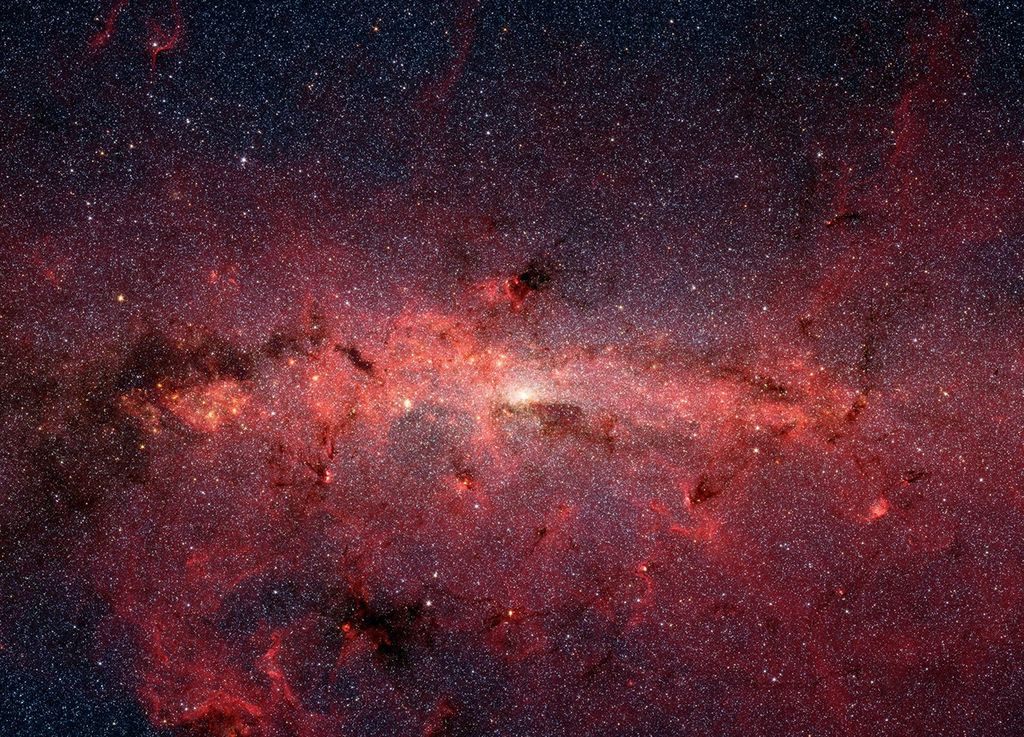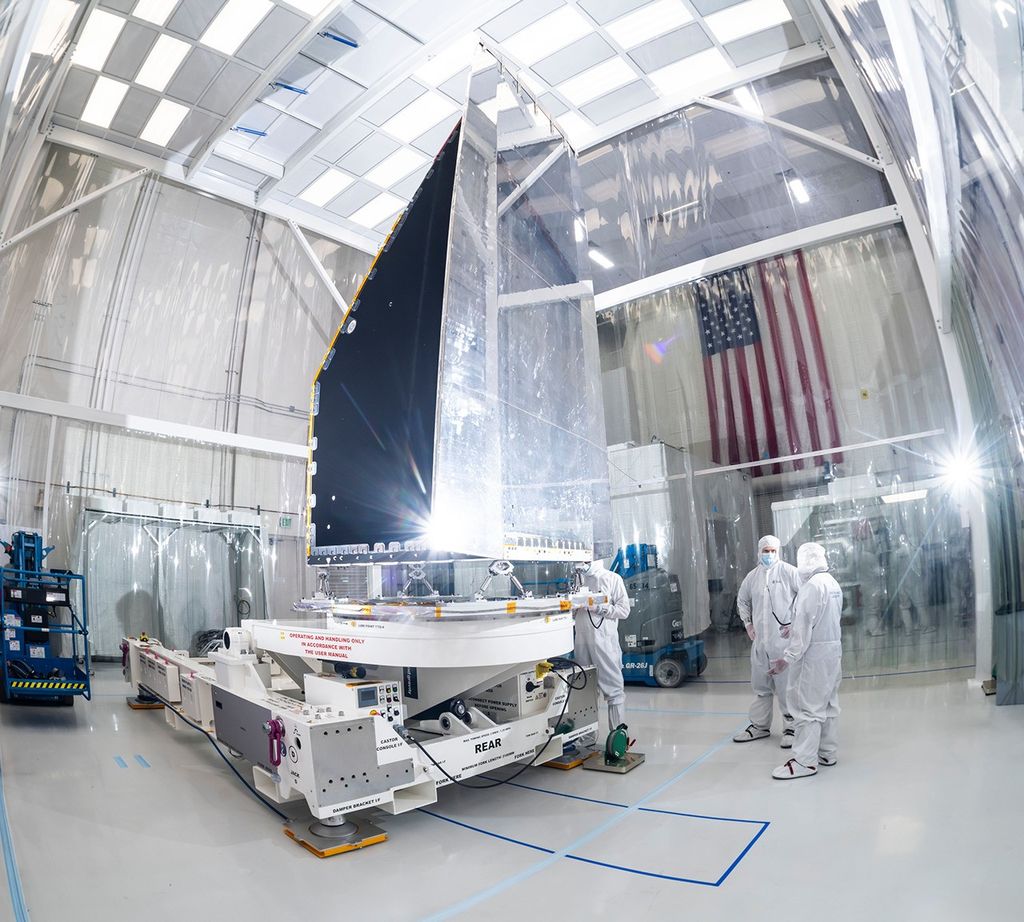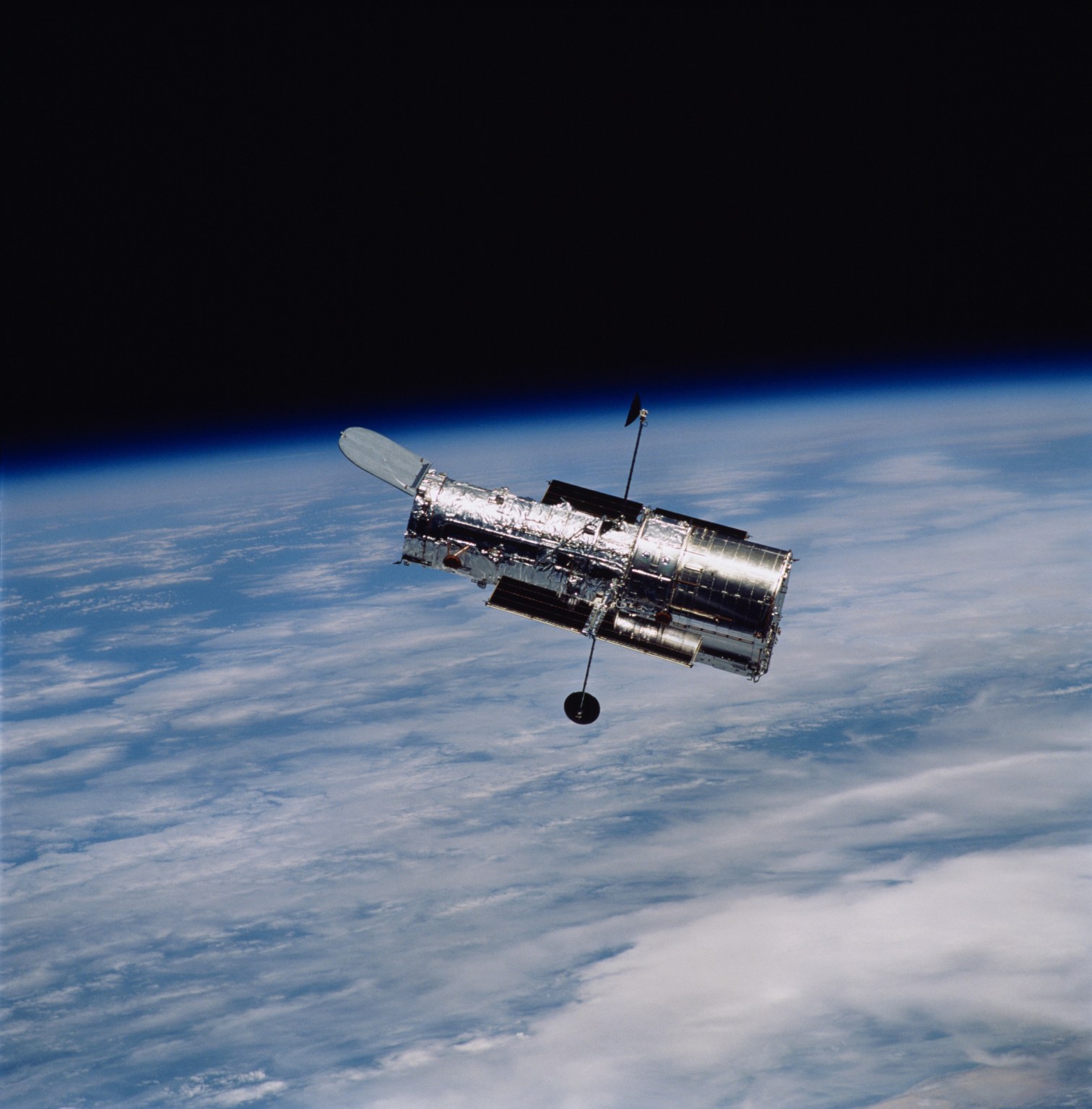1 min read
Trick of Nature Allows Hubble and Keck to Find Tiny Galaxy

This photo illustration shows a tiny galaxy 6 billion light-years away that is smaller than any galaxy ever seen at that distance.
Astronomers discovered this distant galaxy through a phenomenon called gravitational lensing. This phenomenon occurs when a massive galaxy in the foreground bends the light rays from a distant galaxy behind it in much the same way as a magnifying glass does. When both galaxies are exactly lined up, the light forms a bull's-eye pattern, called an "Einstein ring," around the foreground galaxy.
This ring can be seen in the illustration. Einstein rings are named for physicist Albert Einstein, who predicted the phenomenon. By focusing the light rays, this gravitational lensing effect increases the observed brightness and size of the background galaxy by more than 10 times.
The illustration is based on images taken in infrared light from the W. M. Keck Telescope and visible-light images from NASA's Hubble Space Telescope. The Hubble and Keck data reveal information about the early years of the infant galaxy, namely that it is seen just after it formed most of its stars.
The Hubble images were taken on Nov. 5, 2006 with the Advanced Camera for Surveys and the Near Infrared Camera and Multi-Object Spectrometer. The Keck images were taken on Dec. 11, 2006.
About the Object
- R.A. PositionR.A. PositionRight ascension – analogous to longitude – is one component of an object's position.07h 37m 28.44s
- Dec. PositionDec. PositionDeclination – analogous to latitude – is one component of an object's position.32° 16' 18.46"
- ConstellationConstellationOne of 88 recognized regions of the celestial sphere in which the object appears.Gemini
- DistanceDistanceThe physical distance from Earth to the astronomical object. Distances within our solar system are usually measured in Astronomical Units (AU). Distances between stars are usually measured in light-years. Interstellar distances can also be measured in parsecs.The background source that is being lensed has a distance of 6 billion light-years (1.8 billion parsecs). Redshift: The foreground lensing object is at a redshift z = 0.3223; the background source that is being lensed has a redshift z = 0.5812.
About the Data
- Data DescriptionData DescriptionProposal: A description of the observations, their scientific justification, and the links to the data available in the science archive.
Science Team: The astronomers who planned the observations and analyzed the data. "PI" refers to the Principal Investigator.The Hubble image was created from HST data from proposal 10494: L. Koopmans (Kapteyn Astronomical Institute), T. Treu (University of California, Santa Barbara), A. Bolton (Institute for Astronomy/University of Hawaii), S. Burles (Massachusetts Institute of Technology), and L. Moustakas (Jet Propulsion Laboratory). The science team includes: P. Marshall and T. Treu (University of California, Santa Barbara), J. Melbourne (U.C.O./Lick Observatory/Center for Adaptive Optics, University of California, Santa Cruz), R. Gavazzi (University of California, Santa Barbara), K. Bundy (University of Toronto), M. Ammons (U.C.O./Lick Observatory/Center for Adaptive Optics, University of California, Santa Cruz), A. Bolton (Institute for Astronomy/University of Hawaii), S. Burles (Massachusetts Institute of Technology), J. Larkin (University of California, Los Angeles), D. Le Mignant (W. M. Keck Observatory; Center for Adaptive Optics, University of California, Santa Cruz), D. Koo (U.C.O./Lick Observatory University of California, Santa Cruz), L. Koopmans (Kapteyn Astronomical Institute), and C. Max (U.C.O./Lick Observatory/Center for Adaptive Optics, University of California, Santa Cruz). - InstrumentInstrumentThe science instrument used to produce the data.HST>ACS/WFC, HST>NICMOS/NIC2, and Keck II>LGSAO
- Exposure DatesExposure DatesThe date(s) that the telescope made its observations and the total exposure time.November 5, 2006 and December 11, 2006
- FiltersFiltersThe camera filters that were used in the science observations.ACS/WFC: F555W (V) and F814W (I) NICMOS/NIC2: F160W LGSAO: K’-band with the near-infrared camera (NIRC2)
- Object NameObject NameA name or catalog number that astronomers use to identify an astronomical object.SDSS J0737+3216, SLACS J0737+3216
- Object DescriptionObject DescriptionThe type of astronomical object.Gravitational Lens System
- Release DateOctober 4, 2007
- Science ReleaseAstronomers Use Hubble and Keck to Identify Dwarf Galaxy
- Credit
Related Images & Videos

Hubble/Keck Composite Image of Gravitational Lens System: SLACS J0737+3216
This is a color composite image of the gravitational lens system, made from Hubble (blue and green filters) and Keck (red filter) data. The blue ring is the tiny background galaxy that is being stretched by the gravitational pull of the foreground "lens" galaxy at the center of...
Share
Details
Claire Andreoli
NASA’s Goddard Space Flight Center
Greenbelt, Maryland
claire.andreoli@nasa.gov






























